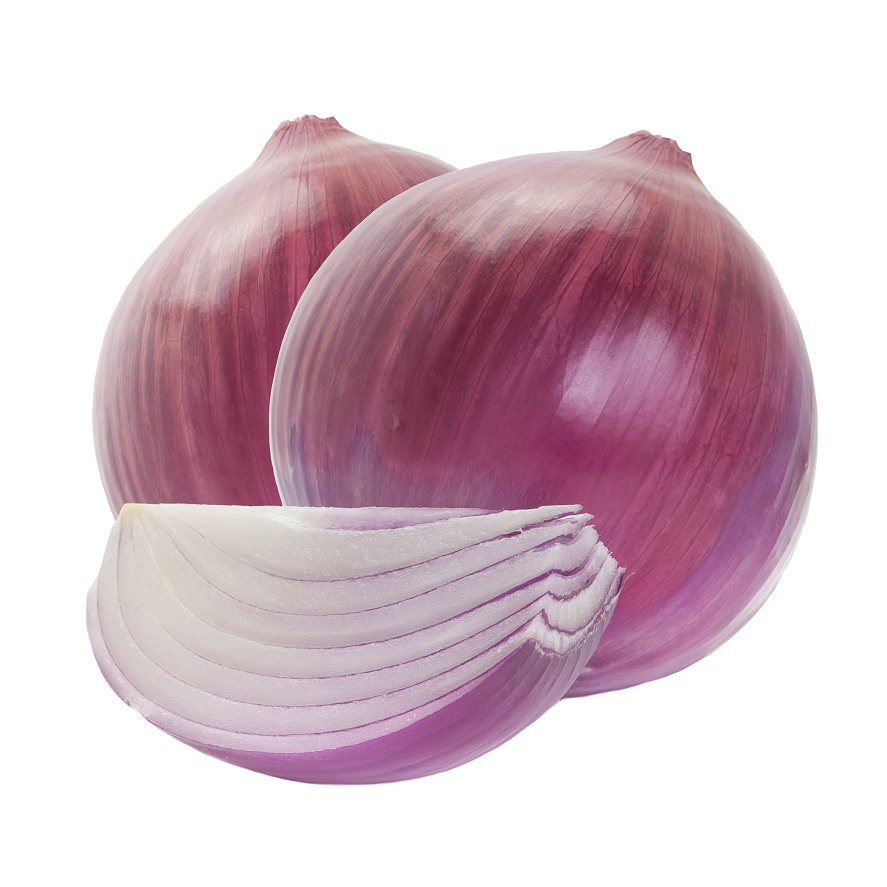 Day after day, week after week, the guy on the telly informs us that fruit and vegetables are the key to supersonic health…
Day after day, week after week, the guy on the telly informs us that fruit and vegetables are the key to supersonic health…
…and for acne, they’re particularly important. I strongly recommend the old “five a day” mantra because plant foods are loaded with acne-clearing antioxidants and vitamins which are impossible to get from meat.
But there’s a catch, one that you may have experienced. Many acne patients are confused to find that these healthy foods give them unexplained bursts of acne, just like a sugar-loaded cake or milk chocolate.
At first glance there’s no explanation. A slice of fresh watermelon contains just 5 grams of sugar, no gluten, no trans-fats and certainly no additives like vegetable oil. Acne patients everywhere are scratching their heads, ultimately writing these reactions off as a simple food allergy.
But the real culprit, a secret culprit, is natural set of plant compounds that for some, may be just as dangerous as sugar.
The real culprits are FODMAPs, a group of natural carbohydrates found all across the plant kingdom.
In this article we will cover the following topics:
- What FODMAPs are.
- The types of FODMAPs and how they impact digestion.
- How FODMAPs cause acne.
- The causes of FODMAP sensitivity.
- How to establish whether you have a sensitivity.
- What you can do about it.
Let’s get started:
What are FODMAPs?
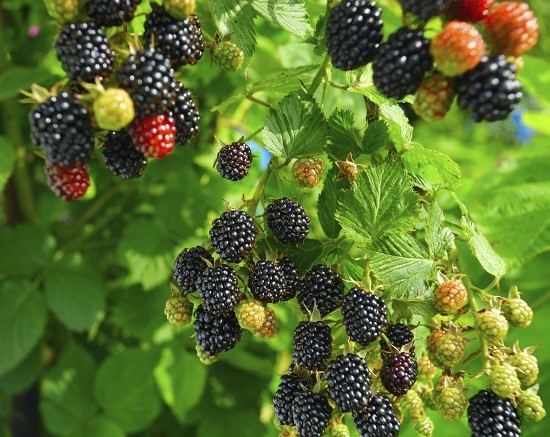 The term FODMAP stands for Fermentable Oligosaccharides, Discahherides, Monosaccharides, And Polyols. In short, FODMAPs are natural short chain carbohydrates which are poorly absorbed in the human digestive system,
The term FODMAP stands for Fermentable Oligosaccharides, Discahherides, Monosaccharides, And Polyols. In short, FODMAPs are natural short chain carbohydrates which are poorly absorbed in the human digestive system,
Increasingly, FODMAPs are officially recognised as a insidious villain behind bowel diseases such as irritable bowel syndrome (IBS), especially over the last five years. The problems occur when FODMAPs fail to be absorbed by the gastro-intestinal tract and instead sit in your digestive system, where they meet pathogenic bacteria living in your intestine.
Read Annihilate Your Acne – learn to prevent acne and stop just treating it!
This bacteria ferments the FODMAPs which, ordinarily in humans, produces only mild, barely noticeable, or even non-existent discomfort. But many people today have a FODMAP sensitivity, meaning that the fermentation produces excessive amounts of methane, carbon dioxide and by-products. The sugars gain an osmotic effect; they increase fluid movement and suck in water.
The result is the IBS-like symptoms of bloating, gas and pain. Normal people are left totally unable to eat nutritious plant foods, with no logical explanation why.
FODMAPs occur everywhere, from onions to apples, to cabbage and red kidney beans. Sensitivity may affect up to 35% of people, according to one study on Australian people. What’s more, FODMAP sensitivies are non-uniform; one person might be unable to digest oligosaccharides, another might get sick from polyols.
Study after study is flooding out; a 2010 review found that avoiding dietary FODMAPs reduced IBS bloating, pain and discomfort in 75% of patients. The scientists concluded that “the evidence base is now sufficiently strong to recommend its widespread application”.
Meanwhile, a 2014 Australian study gathered 30 IBS patients and 8 healthy volunteers and assigned them either a normal or low FODMAP diet for 21 days. The IBS low-FODMAP group had significantly reduced symptoms, proving that “a diet low in FODMAPs effectively reduced functional gastrointestinal symptoms”.
The top 6 vitamins and minerals for clearing acne forever
Then there’s this 2015 study. 75 IBS patients taken from a clinic in Sweden were randomly assigned to either a low FODMAP diet or the standard IBS protocol: regular meal patterns, less fat, avoidance of certain vegetables like onions and cabbage, and smaller meals.
After 4 weeks, of the 67 patients who completed the study without getting ill, the FODMAP and traditional diets both significantly reduced IBS scores, and were roughly equal in their reduction of bloating, gas, inflammation and pain.
Five other studies were published in 2015 too, including this review, and this review which finding that a low FODMAP diet reduced IBS in 37-45% of patients.
Make no mistake, FODMAPs are one of the most under-discussed dietary villains today.
Types of FODMAPs explained in detail
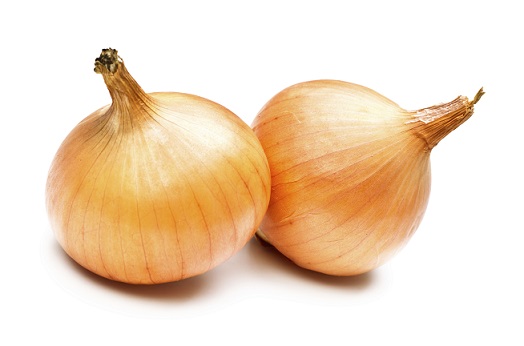 There are many different types of FODMAPs, as the acronym suggests.
There are many different types of FODMAPs, as the acronym suggests.
Firstly, we have the monosaccharides, which solely includes fructose, a natural plant sugar found in varying ratios to glucose and sucrose (which itself is 50:50 glucose and fructose). Fructose is criticised by paleo people all the time as being the worst sugar on earth and a reason to banish fruit, and it does indeed cause problems such as fatty liver in excess.
Normal intakes are acne-friendly, but in FODMAP sensitive people, the gastrointestinal tract lacks an enzyme called GLUT-2, which aids the absorption of fructose from the intestine into the liver. Furthermore, foods like apples and pears have a dramatically higher fructose to glucose ratio, and in humans the digestion of glucose is a big source of GLUT-2. Without GLUT-2, the fructose gets moved along for dangerous fermentation by bacteria.
Hence, FODMAP patients are sensitive to both fructose rich foods (honey, agave nectar, corn syrup) and sugar ratios skewed in favour of fructose (apples, watermelons, blackberries, mangoes, pears).
Recommended – the 7 greatest natural topical treatments for acne
Next we have the disaccharides, with only one member: lactose. Lactose sensitivity is really an entirely different phenomenon to FODMAPs. The bacterial family lactase is missing, and the sugar (found in milk, yoghurt and other dairy) therefore gets fermented by other bacteria. However, you’ll almost certainly know already if you are lactose intolerant and in this article we are concerned with the other, hidden FODMAPs.
Next on the list is the oligosaccharides. Here things get more complicated; these sugars are more structurally complex and minor sensitivities are everywhere. The main oligosaccharides are raffinose, galactans, and fructans. Raffinose is a trisaccharide (containing three sugar types) composed of fructose, galactose and glucose. This is a signature FODMAP of green vegetables as opposed to fruits; raffinose is found in beans, cabbage, brussel sprouts, broccoli, asparagus, whole grains, and other vegetables.
Unlike ruminants, humans, pigs, and other animals with one stomach (monogastric) don’t have the raffinose digesting a-GAL enzyme, and hence it passes undigested to intestinal bacteria which do. By fermenting raffinose, the bacteria produces gases such as carbon dioxide, methane and hydrogen, thus causing some of the gas from FODMAPs. Most humans on earth can ferment low levels of raffinose, but some are sensitive even to tiny amounts.
Fructans are chains of fructose molecules, found in vegetables, but especially root vegetables like garlic, onions, and agave root. They are also found in leeks, asparagus, artichokes, and wheat.
Again, humans lack the correct digestive enzymes, causing bacteria to take up the mantle. Common symptoms of fructan intolerance include abdominal pain. Then there’s galactans, a combination of raffinose and stachyose and similarly indigestible. Galactans are the FODMAP superstar of beans such as lentils, chickpeas and red kidney beans.
Why bread and pasta are a massive cause of acne
Finally, the FODMAP celebrity of the fruit world is the polyol. Polyols consist of natural sugar alcohols such as sorbitol, xylitol, mannitol, and maltitol. You might have witnessed “ols” being added to cakes and chocolate as low-glycaemic sugar-substitutes. Well, they occur naturally as well, and are abundant in apples, apricots, avocados, cherries, peaches, pears, watermelons, cauliflower, green peppers, mushrooms.
The first is sorbitol, slowly digested and strongly linked to abdominal pain, flatulence, and mild to severe diarrhea. Sorbitol is a proven cheerleader of irritable bowel syndrome. Common sources are corn syrup, apples, pears, peaches, apricots, avocado, lychee and prunes.
Secondly we have mannitol, a sweet tasting crystalline alcohol. Mannitol is known to have a laxative effect, like many sugar alcohols. It is found in strawberries, onions, celery, mushrooms, pumpkins, snow peas, and cauliflower.
Thirdly, there’s maltitol, the signature FODMAP of grain-based foods like rye and wheat. The classic symptoms of maltitol include excessive flatulence and abdominal pain. Luckily, rye, wheat and barley are so unhealthy that all acne patients should avoid them anyway.
Finally, we have a natural sweetener found on shelves everywhere: xylitol. This sugar alcohol originates in the fibres of numerous fruits and vegetables, but especially berries, oats, mushrooms, and sugar canes. Luckily, xylitol seems to be a relatively gentle FODMAP, though it has been linked to diarrhoea in high doses.
The key point that unites all FODMAPs is this: we humans either entirely lack the enzymes to digest them, or those with a FODMAP sensitivity have an impaired ability to digest them.
The link to acne
 Have you even wondered why an apple breaks you out? There’s no obvious explanation, but an apple is one of the most heavily concentrated sources of FODMAPs in the world. It contains polyols, fructose in a poor ratio to glucose, and oligosaccharides such as raffinose.
Have you even wondered why an apple breaks you out? There’s no obvious explanation, but an apple is one of the most heavily concentrated sources of FODMAPs in the world. It contains polyols, fructose in a poor ratio to glucose, and oligosaccharides such as raffinose.
FODMAPs have not been shown directly in scientific studies to cause acne yet, but the link is strong.
For instance, IBS has been linked to skin conditions such as dermatitis, and allergic reactions to many foods can trigger an onslaught of inflammatory chemicals such as histamine. Celiac disorder is arguable similar to FODMAP sensitivity syndrome. Your gastrointestinal tract cannot properly process gluten and it gets both fermented by bacteria and attacked by your immune system.
Why zinc supplements can reduce acne by 49.8%
Similarly, if your digestive system realises that it cannot tolerate apples and their FODMAPs, it may adapt, and like gluten, trigger an inflammatory response every time you eat it.
Excessive fermentation of FODMAPs fuel pathogenic gut bacteria, subsequently fuelling intestinal permeability and leaky gut syndrome. Friendly strains like lactobacilli could be crowded out, decreasing their production of nutrients like vitamin K2 and anti-inflammatory butyrate.
This 2015 study found that by restricting fermentable short-chain carbohydrates in 27 patients with IBS, total gut colonies of bacteria fell. However, beneficial strains such as Clostridium and Akkermansia muciniphila were substantially increased, while the pathogenic Ruminococcus torques retreated.
While FODMAPS are not proven to cause acne, judging by the evidence I believe that they almost certainly do. FODMAPs have a massive effect on your gut health, and your gut health has a massive effect on acne.
For years, I’ve wondered why so many internet acne patients reacted to antioxidant-packed foods like watermelon or blackberries. We now have the answer. The case of FODMAPs fits the mystery like glove.
What causes a FODMAP sensitivity?
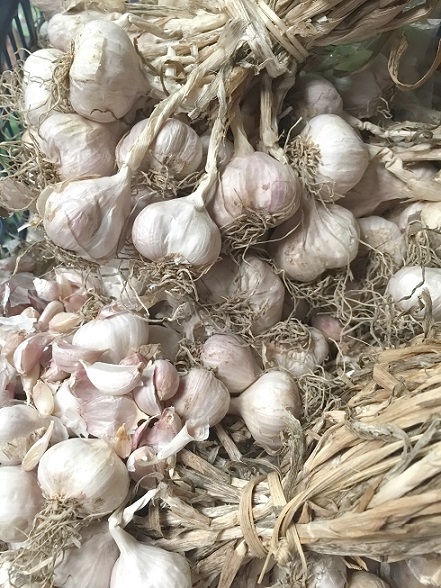 As acne patients, having the full menu of antioxidants-rich foods out of bounds is a situation we simply cannot abide by. So how do you cure FODMAP sensitivities?
As acne patients, having the full menu of antioxidants-rich foods out of bounds is a situation we simply cannot abide by. So how do you cure FODMAP sensitivities?
Chronic stress is one of the main causes. Stress is a well-known disruptor of the GLUT-2 enzyme, the transporter responsible for fructose uptake (see earlier). Stress can also warp human gut flora, helping unhealthy strains and crippling beneficial ones like lactobacilli and bifidobacterium.
Furthermore, stress reduces the variety of your gut bacteria. Why? Nobody knows for sure, but some bacteria have direct receptors for adrenaline (epinephrine) in their cell membrane. The butterflies in your stomach, a sinking feeling, or the feeling that your stomach no longer exists you get from strong emotions are all signs of the effect stress has on your digestion.
Another major factor is gut bacteria which is crippled in the first place. In the Western world, our way of life is extremely sanitised compared to Africa or poor parts of Asia. Of course, that’s a great thing because we don’t routinely die from infectious, dirty water, or infected wounds.
Sea buckthorn oil – a topical treatment which lowers oily skin by 45%
However, we are also rarely exposed to varied bacterial strains from dirt, from unclean plant matter, or from live bacteria in our surroundings.
The result is that citizens of third world countries have dramatically more varied gut bacteria than westerners do. Healthy bacteria strains are the silent guardians against pathogenic ones, the same strains that cause digestive problems when fed FODMAPs.
Diet is also vital, including a high sugar diet, which feed candida and other yeasts, excessive oral antibiotic usage, and eating too many pesticides, which both which wipe out friendly bacteria.
The condition known as SIBO, small intestinal bacterial overgrowth, also interferes with the digestion of sorbitol, fructose, and other short-chain carbohydrates. In fact, SIBO is strongly linked to FODMAPs in studies and meanwhile, acne rosacea patients are ten times more likely to have SIBO (study).
The wild card is definitely genetics. For example, some of us might naturally manufacture less GLUT-2 and therefore digest fructose inefficiently, or we may be predisposed to bad bacteria taking over.
Polyol FODMAPs like xylitol and sorbitol are partially absorbed in humans; what if a genetic scale exists, ranging from greater efficiency to total failure? FODMAP sensitivity has only been popular for 5 years, so the answers should roll in very soon.
Is FODMAP sensitivity causing your acne?
 Overall, there’s a big chance that FODMAPs are making your acne worse, and it’s something you should definitely consider.
Overall, there’s a big chance that FODMAPs are making your acne worse, and it’s something you should definitely consider.
If for example, you have already eliminated the classic acne supervillains like sugar, wheat, trans-fats, vegetable oils (not healthy at all; discussed in my eBook), yet are still getting acne outbreaks like clockwork, FODMAPs could be the culprit.
FODMAPs aren’t a niche issue either, with 35% of Australians having a sensitivity. Sensitivities exist all over the world, including Asian countries like China, Thailand, and Vietnam.
The signs and symptoms can be literally any digestive problems, including bloating, cramps, gas, pain, and discomfort. Here’s a brief guide to the FODMAP status of many foods:
Fruits high in FODMAPs – apples, apricots, blackberries, cherries, dried fruits (way too much fructose), grapes, mango, nectarines, pears, peaches, persimmon, plum, watermelon.
Fruits medium in FODMAPs – unripe banana, longon, rambutan, lychee, grapes.
Fruits low in FODMAPs – ripe banana, blueberry, cantaloupe melon, grapefruit, strawberry, raspberry, honeydew melon, kiwi fruit, lemon, lime, mandarin, orange, papaya, pineapple, rhubarb, passion fruit.
Vegetables high in FODMAPs – artichoke, cabbage, asparagus, garlic, onions, okra, leeks, Jerusalem artichoke, shallot, snow peas, sugar snap peas, radicchio.
Vegetables medium in FODMAPs – avocado, beetroot, broccoli, brussel sprouts, butternut pumpkin, cauliflower, celery, fennel bulb, green peas, mushroom, sauerkraut, guacamole.
Vegetables low in FODMAPs – alfalfa, bamboo shoots, bean sprouts, bell peppers, bok choy, carrots, cherry tomatoes, chives, cucumber, eggplant, endive, ginger root, green beans, kale, lettuce, tomato, swiss chard, spring onions, zucchini, spinach, seaweed (nori), parsnips, pickles, olives.
Almost all the foods listed are healthy and nutritious aside from the high sugar content of fruits like bananas, which won’t cause acne from one isolated consumption anyway. If any trigger acne on your face without being a full-blown, throat swelling, hospital visit allergy, then a FODMAP sensitivity is highly likely.
If you currently eat a standard American diet, your digestive issues could be caused by any ingredient. You could have a mild gluten intolerance (more widespread than the 1% who are full-blown celiacs), or you could be allergic to milk proteins like casein.
Therefore, the real killer sign is if your diet is completely clean. FODMAPs are a big reason why grain hating paleo followers often get digestive problems six months down the line.
Many are middle aged people who grew tired of obediently following traditional dietary advice, only to watch their health and vitality wither away. Then they jumped aboard the paleo train and began guzzling down more nutritious plant foods per month than they’d probably eaten during their entire life before. But their gut bacteria was so starved of prebiotics for years that it couldn’t cope with all the plant molecules such as FODMAPs now flooding in.
If that scenario fits you like a glove, then FODMAPs may be the menace behind all your problems.
If you have stress, IBS or SIBO, a FODMAP sensitivity is extra likely. If you want scientific confirmation, then good news: FODMAPs have become such a recognised medical issue that doctors now offer a breath test.
The strategy!
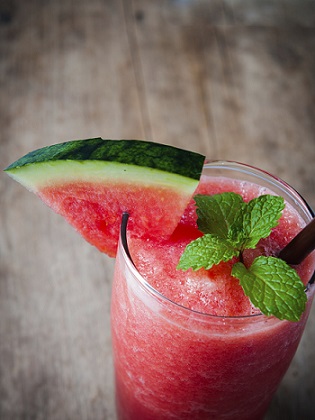 Step one is cutting your intake of FODMAPs down to as low levels as possible without compromising your acne nutrient intake.
Step one is cutting your intake of FODMAPs down to as low levels as possible without compromising your acne nutrient intake.
However, many high FODMAP plant foods are otherwise terrific for acne. Garlic has potent anti-inflammatory powers, apple skins are like an armour of antioxidants, and cabbage has vitamin C.
Hence, the best approach is to cure your FODMAP sensitivity altogether. Firstly, you should eliminate all FODMAPs for approximately two months. As well as immediately relieving your acne, this will allow pathogenic strains of gut bacteria to fall and healthy ones to regenerate.
You should closely monitor your acne and digestion, to establish once and for all whether you do have a sensitivity. Keep your sugar intake low, to starve unhealthy microorganisms of fuel.
To be completely sure, you could briefly eliminate all FODMAPs for two days, and then restore them. If your acne comes roaring back like magic, then the genie will be out of the bottle.
Both during and after the two months, you enrich your friendly gut flora in other ways so that once you reintroduce them, FODMAP-rich foods will be far more digestible.
If you’re not sensitive to dairy proteins or lactose, then yoghurt, kefir, or blue cheeses are full of beneficial bacteria. Depending on your sensitivity, you can buy sauerkraut juice off the internet; cabbage is full of FODMAPs, but the bacteria consumes many of the short-chain carbohydrates during the fermentation process. The same applies to other fermented vegetables. Fermented soy such as natto and tempeh are also full of good bacteria. You need to cram in as many prebiotics as you can without setting off the FODMAP alarm.
Hence you should continue to eat a wide variety of low-FODMAP plant foods, as they contain prebiotics which help existing bacteria to grow. Dark chocolate, for instance, contains flavonoids which healthy lactobacilli love to feast on. Nuts like pistachios boost gut bacteria superbly.
Once two months are up and you’ve implemented all that, you can gradually reintroduce some moderate-FODMAP foods like broccoli, beetroot, etc. Broccoli is a simple one to test your sensitivity on. If you mysteriously no longer get acne from moderate FODMAP foods, then you can drive forwards; keep experimenting with more FODMAP foods, to see what your acne can now withstand.
If FODMAP sensitivity does have a genetic component, then you will be partially limited forever, but if it is mainly caused by our modern lifestyle, it may well be curable.
Conclusion
The acne threat from FODMAPs is very real. FODMAPs should take their place alongside sugar as a plant compound that acne patients suspect.
FODMAPs are not fundamentally unhealthy, because it’s a faulty digestive system that brings out the dangers in them. Nevertheless, if you’re sensitive you can improve your acne significantly by eliminating them, and then by fixing the sensitivity at its root.
What you should definitely not do is adopt a low-FODMAP diet simply because it sounds cool. Too many FODMAP-rich foods are nutritious and high in antioxidants to justify avoiding them if it’s anything but totally necessary.
NEXT: read the 167 page eBook and get the ultimate diet for acne
Thanks for reading!
What prebiotics do you recommend?
As well as any other supplements?
Please respond soon, this IBS-M sucks :(
I also see you said we should keep our sugar intake low.
So does this mean no sweet potatoes?
You can definitely eat sweet potatoes, my rough recommendation is 50 grams of sugar per day (which can average out, so 30 grams one day, 70 another), which sweet potatoes can easily fit into. They’re very high in vitamin A and antioxidants so their acne benefits would outweigh the problems from sugar anyway. The same principle applies to fruit. Plus, sugar from whole foods is nowhere near as deadly because it’s bound up in fibre, which dramatically slows down the absorption.
Awesome :)))) Last question. what about the Viatimins from the Garden of Life Zinc & Vit E?
. Some of the vegetables in the blend are high FODMAP foods like Garlic,Broccoli & Asparagus.
Should.I stop taking them as well?
It depends on your reaction to them, if your digestion cannot cope then that’s your answer right there, most likely if it is FODMAP foods which you cannot tolerate then the garden of life supplements will be intolerable for you. Head to the top acne nutrients article and you’ll see my recommended zinc supplement (nutrabio l-opti zinc) and for a vitamin E supplement with no proprietary blend, Dr Mercola’s is a good choice.
About your previous question – fermented dairy like yoghurt and kefir are the basic fermented foods to eat (if your skin can tolerate dairy, that is). Next you’ve got fermented vegetables such as sauerkraut, and fermented soy products like tempeh and natto. Expose yourself to nature more, if you buy organic vegetables then don’t bother washing them under a tap. Simply walking outside and sticking your hands into soil will end up helping your gut bacteria. I saw a study once which showed that gardening enriches gut bacteria massively. To increase and diversify your gut flora extra quickly you can take a prebiotic supplement, two examples being Mercola’s or Garden of Life (great choices if you have the money), but there’s many different choices. Make sure that the bacteria count is 50 billion CFU or higher. Also eat plenty of fiber to provide food for the good bacteria, and keep your sugar intake fairly low (about 50 grams per day or less), to avoid feeding harmful stain of gut flora such as candida.
Many acne-friendly foods discussed on this website have unique gut bacteria boosting powers; for instance, dark chocolate contains flavanols which strains of good bacteria use as fuel. Watch out for grains like wheat as well; there’s some evidence that since gluten is poorly digested, it gets relegated to the bacteria for breakdown and apparently unhealthy strains of bacteria love to feast on it the most.
Don’t take oral antiobiotics either (unless it’s an emergency) since they can decimate virtually all types of bacteria. Once the bacteria is in place, eating a wide variety of nutritious plant foods will allow it to diversify and grow further, since there’s such a wide variety of fibre types and individual phytonutrients in foods which have unique effects.
Is there a link for this particular blend?
I’m so desperate to just purchase anything but I want to make sure it’s the correct Vitamin.
My dad said I can only have one ; (
So just any Viatmin E Blend?
If you’ve got a sensitivity to FODMAPs then Dr Mercola’s vitamin E is a good choice but this Solgar one is the best out of the cheaper products. https://www.amazon.com/Solgar-Vitamin-Softgels-Tocopherol-Tocopherols/dp/B0001VURB0
Hi Richard, assuming I have a leaky gut, (although I don’t seem to get any IBS or noticeable bloating), how long and more importantly, how do I do know that my gut has healed?
When sensitivities to specific foods disappear. It can take months to heal fully.
Hi Richard,
Thanks for the article, an excellent guide to this tricky subject.
I recently almost cleared my rosacea in a month after a considerable life change only to have it then creep back to the original state. I am racking my brains trying to figure out what I have (re-)introduced into my diet. I have a feeling starting to use almond milk in my protein shakes and seasonal veg like brussels sprouts, sweet potato, squash, tart apples and nuts may be a key.
I especially liked that you talk about the balance between good and bad bacteria is the key and that you have recommended some items for prebiotic effects that we’re told to avoid on charts such as this https://is.gd/ex04Re. Also, to be avoided on that chart for example, are pistachios, which you recommend. Could you explain this a bit further?
I suppose a chart reflecting your advice would have a time-line of stages/symptom prevalance to indicate times when certain foods can be re-integrated at differing amounts. It would be good to have a chart such as this rather than the oversimplifications widely available online!
Thanks,
LF
Pistachios are indeed high FODMAP, so this article could be clearer. Pistachios = better for maintaining diverse gut bacteria once your gut health has improved and the FODMAP sensitivity has faded away, not in the beginning stages.
Hi Richard, I have been monitoring the effects of certain FODAMPS and it seems now that even fairly innocent foods like rasberries and carrots are causing problems for me. Whenever I eat anything with a trace of sugar in it, whether fruit or veg, my body seems to reject it and this seems to also include dairy. My diet is becoming very limited as I’m now just eating meat, eggs and roast potatoes in order to eliminate problem foods. I’m supplementing with GOL vitamins E, Zinc and D3 and Camu Camu powder, the Gelatin you recommend and MSM powder. Do you have any suggestions as to what else I could eat?
You sound much more sensitive than the average acne patient, so rather than eliminating every slightly inflammatory foods forever, I would take a high quality and high strength probiotic supplement, in an attempt to strengthen your digestion massively. Keep avoiding foods like grains and too much sugar for now, to allow your digestion to stay the same while you experiment with the probiotic.
Thanks Richard. I’ve not been eating grain for several months and pretty much eliminated all sugar. Garden of Life ’50 Billion Guaranteed’ is a specific formula for men, with no mag stearate, so I’ll try that and hope that helps. I’m also having to take an anti-fungal med for a nail infection, so I’m sure that’s not helping my healthy gut bacteria.
Has anyone found that using small amounts of dehydrated, granular garlic or onion is ok, even if using fresh sources cause a problem? Just wondering if any of the troublesome aspects are lessened in the dehydration process..
How do you even know if you shouldn’t be eating certain vegetables or fruits? Is there any way to figure out what his harming your body or causing acne to your body?
There’s a strong chance that you’ll have at least eaten some high FODMAP foods in the past as they’re not rare. Think over your experiences and remember any bloating, indigestion and nausea from foods like apples or onions. Check over the FODMAP list in this article. If you want to experiment, then eating an apple (high FODMAP) won’t destroy all your acne plans forever; you’ll be able to withstand one dodgy food, and you’ll have extra knowledge about your dietary sensitivities.
Hi! Are lentils a good acne food mixed together with onions, rice, turmeric and black pepper?